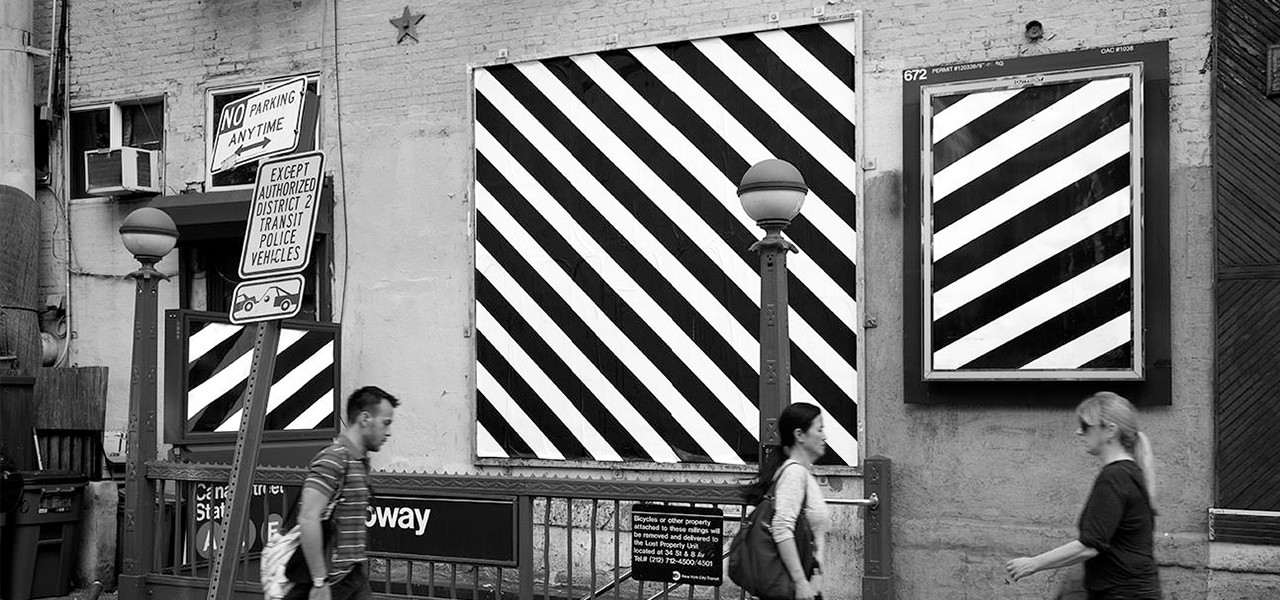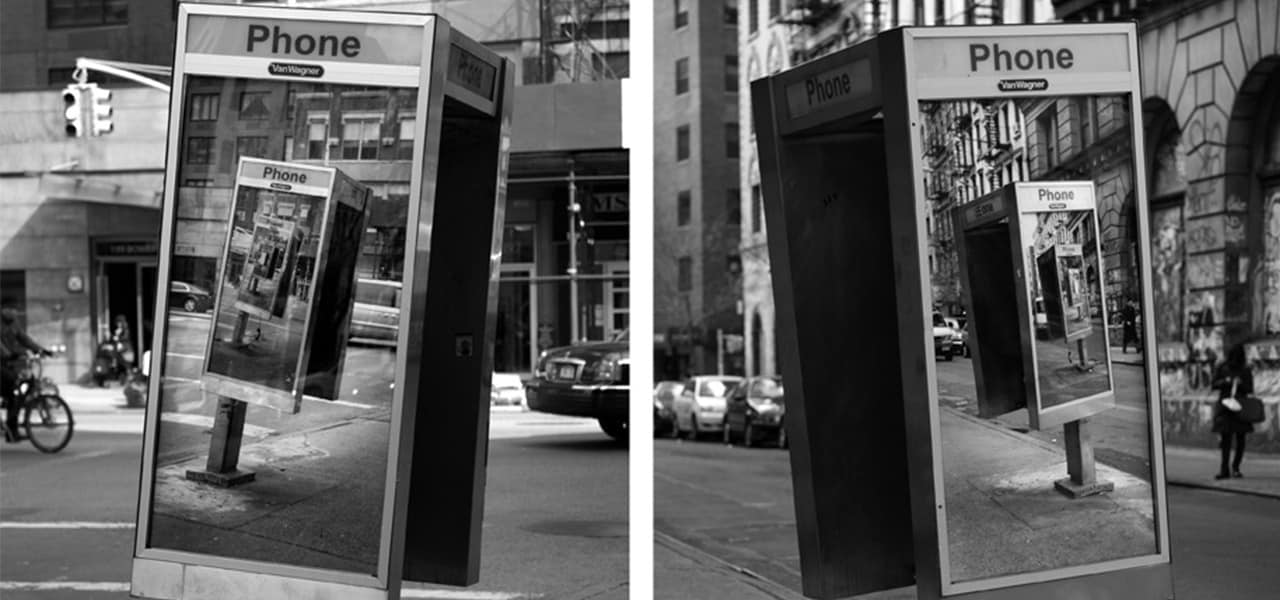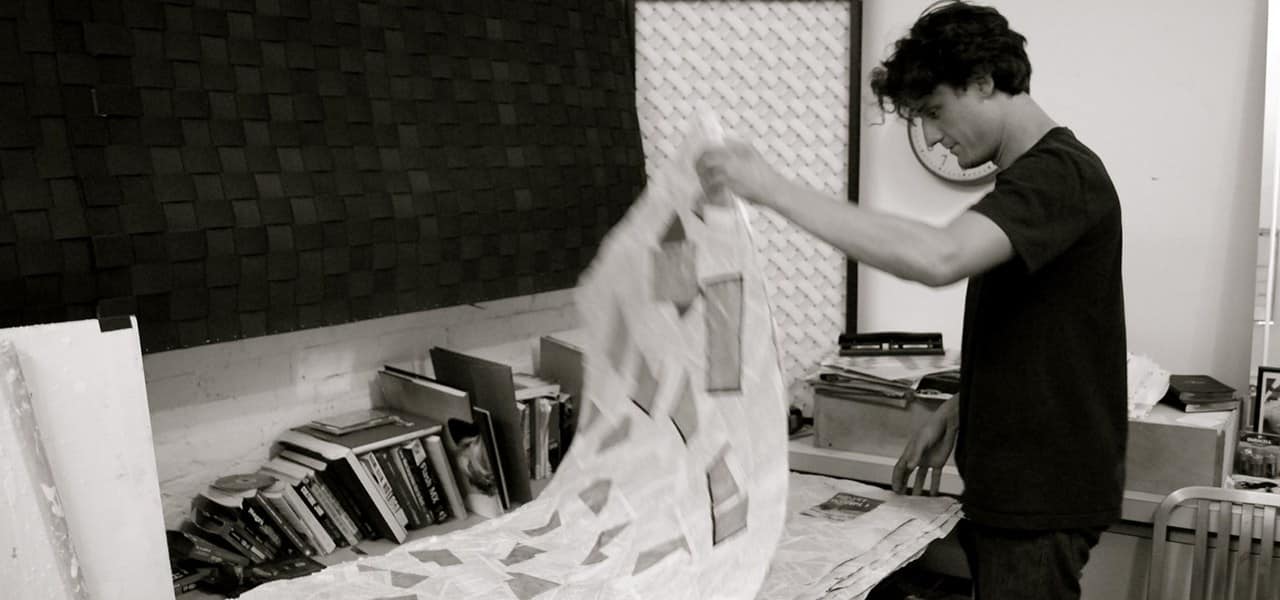Recently, we’ve been talking about culture jamming and the way that it corresponds with Urban Art. As two concurrent streams, which directly influence our shared space, both commercial advertising and public interventions play important roles in our lives. The things we see and hear every day on the streets, or through our windows, are the things that we didn’t ask for, and that we usually cannot change (unless we contribute to this content ourselves). And yet, they make such huge impact on our lives.
Something similar, but not the same as culture jamming is adbusting. The founder of Public Ad Campaign, and the person who basically defined the term is Jordan Seiler, who has this lifelong, genuine interest in how we use public space. After he realized that he was more inclined to study photography than to become a biologist, he gradually started pursuing his artistic intentions, and overlapping his enthusiasm for photography with his passion for solving the complexity of public spaces. Although his work falls under the category of activism, the way that he approaches these problems is executed with a particular aesthetic sensibility, which clearly speaks about Seiler’s strong artistic aptitude. Because of this, his works, especially the early ones, are reminiscent of street art. However, the problems that he addresses go way beyond simple interventions, and therefore his work is always somewhere in between, circulating between galleries, public spaces and the world of social ideas.
In this article, we will share with you a piece of Jordan Seiler’s brilliant mind, and give you some insights into the interesting methods of Ad Busting, all excerpted from our conversation with Jordan. How do we react to the public space? What can we do about it? Is there really a right way to respond? And finally – what does Jordan do about it? Read all about it below.
How is Public Art Campaign more than Culture Jamming?
First of all, what makes Jordan Seiler different from most culture jammers, is that he is not particularly interested in the content of advertisements itself. He is concerned with the more general picture – with the fact, alone, that advertisers intentionally (ab)use our shared space. This has influenced Seiler’s aesthetics slightly, making it simple, rather than representational, in order to keep the focus on action, which, according to Seiler, has true power (as opposed to the content, which only has physical presence, but operates on a less permanent level).
So, we asked Jordan about the general character and nature of his art.
Jordan Seiler: I have an interest in questioning advertisings use of our public spaces and am much less concerned with critiquing the content of those messages. If this informs my visual aesthetics at all, it has pushed my aesthetic towards simplicity and design over representation and critique knowing that focusing on the content of my work distracts from the action, which is where I see its power. As an artist I am much less interested in developing a long term visual language than figuring out new and interesting ways to critically engage how we use public space and using them to promote a more robust public understanding of the issue. As an artist, I am much less interested in developing a long term visual language than figuring out new and interesting ways to critically engage how we use public space and using them to promote a more robust public understanding of the issue. This means that I see much of what I do as artwork, even if there is no object left behind. Many of my works can be called Social Practice, and organizational projects like NYSAT, participatory projects like PublicAccess, and even the entirely digital NOAD, all required the participation of others in order to be realized. If there is an aesthetic thread that runs through my work, it is dialogical. In fact, I even see media and interviews as part of my artwork, because they allow me to get the core idea out to a larger audience. In fact, they may be more effective than gallery works at creating consciousness and might for this reason actually be the better art as far as I’m concerned. Either way, it is a stretch to call an interview art, but I take them almost as seriously as I do my more recognizable artistic endeavors.
OPEN WALLS: However, we cannot go around the things that physically constrain our actions, and in Jordan’s case, there is one thing that could be described as his “visual language”, after all:
Jordan Seiler: If there is one material I will likely continue to use throughout my career, it is the physical advertising frames and the infrastructure of out of home media companies. I find a great satisfaction in treating the property of outdoor advertising companies with the same respect I have for their business models and would always rather frame a gallery work in stolen ad frames, or create an artwork itself out of their stolen property. Being trained as a photographer, and often in need of a document of a street intervention, photo and video have always played a big role in my work.
Jordan Seiler’s Public Actions and Apps
Before we proceed, let’s take a quick survey of Jordan Seiler’s notable works. As you’ll probably notice, they are mostly based in New York, which is his hometown. It all started in 2001, when Seiler was making some large-scale advertising takeover projects, which culminated in 2005 at the Scope Art Fair in NYC. The artist replaced 96 ads surrounding the Times Square hotel, where this fair took place. However, as amazing as this may sound at first, Seiler faced some severe legal issues after that, along with other unpleasant consequences, which made him rethink what he was doing. The whole incident made him realize that promoting active participation, which leads to having ideas is way more mature than hoping to inspire ideas by making things (most of which are plain destructive). And that’s how his action-based projects began. In 2009, these intents saw the light of day, when he organized the NYSAT project. Around 100 participants were protesting against 20 000 sq ft of advertising in downtown New York City. A similar participatory project was done later, and it was called The PublicAccess project. It involved creating and distributing tools for breaking into outdoor advertising infrastructure around the city.
OPEN WALLS: Still, perhaps his most interesting projects are based on the experimental Augmented Reality technology. Projects like Re+Public, and NOAD, virtually turn the existing advertising infrastructure into a special kind of digital gallery. How were they introduced?
Jordan Seiler: Built with the expectation that we will be wearing Head Mounted Displays very soon, the app envisions a not too distant future in which we will have viable real world ad blocking, as well as the ability to use outdoor advertising infrastructure to display more art in public places. Having worked with AR in public space, the technology has recently begun to creep into my personal works as well.
Take a look at the video below, to see what these apps do.
Who Owns The Public Spaces?
OPEN WALLS: Why is this “appropriation” of public space of such particular interest to you?
Jordan Seiler: I think it’s important to question the monopolization of our public visual environment for commercial concerns and what that means for the determination of our collective social agenda. By privileging one type of message over another, we are through repetition, setting the terms of our cultural and political discourse. Considering the great hurdles we face socially and environmentally, the commercial discourse we surround ourselves with not only ignores our current reality but actively works against it by distracting us from each other in favor of ourselves. This deception, taking place in public space, makes the offense all the more malevolent as our shared environment must function as a place in which collectivity can manifest. Instead the predominant messages and cultural values we enforce in public space actively appeal to our individuality and or commercial segmentation. True holistic visions of society that include the economic and social justice at the heart of real societal reform lie outside of capitalism and thus the corporate media agenda that we allow unfettered access to our shared public spaces. By reclaiming our streets and demanding a public visual landscape that reflects the public’s concerns over a commercial agenda, we call upon a prized and shared civic resource to host the revolution once again.
I want people to look closely at the way in which outdoor advertising effects both the built environment and our mental environment. Extremely simply put, advertising monetizes the walls and other surfaces within public space causing access to be restricted to those who can afford to pay.
OPEN WALLS: You’re talking about the built environment and the mental environment. Are you more concerned with the aesthetics of advertising as such, or with the impact that it might have on people, individually and collectively?
Jordan Seiler: I am less concerned with both the aesthetics and the individual messages of advertising in the same way that an environmental activist today should be less concerned with individual drilling rigs and rather with fossil fuel extraction as a viable option for powering our world. It is important to understand that commercial media, and capitalism more generally, nimbly absorbs criticism without having to alter the fundamental subjectivity that perpetuates its existence. Take culture jamming for example. What was once thought of as a razor sharp intellectual scalpel that could topple corporations with a well placed detournement, is now a part of most “alternative” sloganeering. Those who would understand a good culture jam become a demographic themselves to be targeted and sold products using a language they created. In light of this, criticizing the aesthetics or individual messages of commercial media appears less like activism to me than a self imposed laboring to perpetuate the system which you are trying to dismantle.
Instead, I would ask us to take for granted that the individual messages are inconsequential to our collective goal of fundamentally altering our relationship to products and things. The cycle of production and consumption that advertising in public space perpetuates should be the focus of our discontent. The way to break free of this cycle is not to reimagine alternative systems of production and consumption in the form of new products and advertising campaigns but rather to develop new subjective realities that have nothing to do with production or consumption in the first place. Simply put, the solution to your lack of political understanding may not be watching better news, but rather throwing out your tv, a solution not on offer through commercial media.
What about the other “public space”?
OPEN WALLS: Would you agree that the term shared space can also be used to describe the virtual space – meaning, the Internet? If so, do you consider ads which constantly appear online (on YouTube for example, on Facebook, and everywhere else basically) to be equally responsible for the monopolization of the public visual environment that you’re concerned with? Do you sometimes react to that, or is it only the physical space that you’re interested in?
Jordan Seiler: My personal interest is in physical space because I feel like it is the purest example of a space in which we do not have the opportunity to opt out, and thus the most egregious example of commercial media forcing itself on our consciousness. Other forms of virtual space require a mediating device like a television, radio, newspaper or more recently the Internet. Because of the cost to produce these mediating devices, along with the content that comes through them, advertisings existence within them becomes more difficult to criticize. I would like us to collectively realize the role commercial media plays in influencing our social trajectory and in doing so attempt to control its influence on us at all points of contact. By concentrating my concerns on public space I am attempting to use the unique vulnerability of commercial media in public space to advance this issue which I would hope will carry on to other spaces commercial media has inundated, including The Internet.



